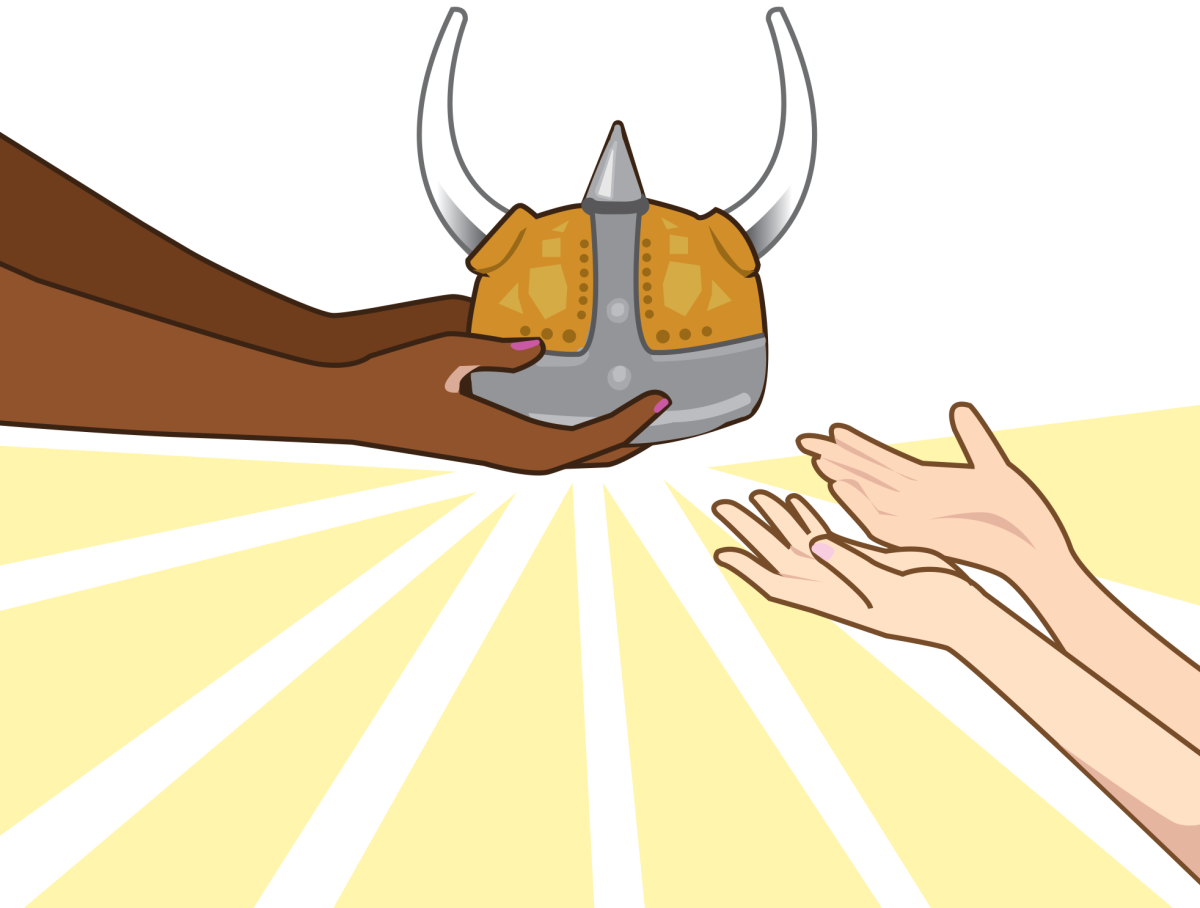While gym culture has often been stereotyped as closed-off, competitive and toxic, the environment at the gym can be a healthy and supportive community for everyone. As the gym community continues to expand, the impact on students’ mental health and well-being demonstrates that there is more to gym culture than just its stereotypes.
“Actually, I’m kind of surprised by the gym culture [at Inglemoor] because I thought everyone was kind of ‘beefy headed,’ but everyone’s pretty nice in there,” said junior Norah Accola (she/her).
Media has often led to generalizations about the types of people who go to the gym, which can cause anxiety about being around stereotypical gym bros. However, taking away the stereotypes reveals a group of people who are all working to support each other’s athletic goals. With a supportive sense of community and the positive benefits of working out, going to the gym greatly improves and helps balance stress.
“It’s essential to my mental health. If I did not work out, I would not be sane. I would not be sleeping, it would not be good. No one would want to see it,” said junior Aylin Dutt (she/her).
Besides sports, which is a strong beginning motive for working out, senior Alex Song (he/him) said he had gained “this mindset of self-improvement, pushing yourself and seeing your progress.”
This showed that he didn’t necessarily get this rush solely from physical results but simply from participating in athletic activities that make them more confident in their abilities.
“I think it’s not only going to the gym, but just doing sports in general. It’s great for your body image,” said Song.
There can be a fine line between using the gym as a healthy versus unhealthy coping mechanism. Sometimes, using the gym as a coping mechanism can become harmful if students don’t have the right motivations.
“People go to the gym to try and lose weight, and it can become quite unhealthy if people get obsessed with it,” said junior Jack Budden (he/him).
Issues regarding body image have become increasingly more and more of a concern in the media as decades have progressed. Health, fitness and beauty industries continue to earn money by planting insecurities. These influencers and companies continue to promote specific and unrealistic body images through advertisements and social media platforms such as TikTok and Instagram.
“You have this expectation that you have to look [a certain way] to fit in, especially because gym culture is growing, especially for younger people as well. More people are going to the gym, and it kind of makes people in society feel like they need to go as well. Social media, body checking and all the filters nowadays can make someone really insecure about themselves. So that will promote them to go to the gym to fit in,” said Budden.
Social media influencers perpetuate this harmful generalization through the use of toxic diet cultures that push the limit too far. Many of these body image ideals and diet culture norms greatly influence how people view the gym and the people who go there.
“I think a lot of media sets unrealistic expectations because a lot of bodybuilders do use steroids. And a lot of people don’t know that,” said Song.
Song said he wishes there was more transparency from those who choose to use social media filters or steroids in order to avoid setting unrealistic expectations for others.
Factors such as environmental stress and media influence on body expectations can bring forth unhealthy habits if students aren’t careful; they can end up restricting food intake, following diets or pushing themselves too hard.
Dutt said some of her peers obsessively track their protein intake or work out excessively in order to improve their athletic performance or change their appearance.
“Some kid I know drinks four energy drinks a day and is eating just chicken, and I’m like, ‘This is not healthy for you.’” said Dutt.
Many athletes and gym rats seek to continue progression and reach personal records. Reaching these goals is no small feat. However, when basing personal success entirely on the frequency of meeting your personal records it creates an unhealthy mindset that can lead to physical problems.
“I broke my hip in eighth grade and it was because I wasn’t eating enough and I was training way too much. And then that kind of spiraled for a little bit,” said Dutt.
According to junior Quinn Marshall (he/him), using the gym as an outlet can be a two-way street, and knowing when a coping mechanism has escalated towards unhealthy bounds can be a blurry line, especially in the context of coping.
“It’s kind of what you put your mindset to, because people go to the gym either to destroy themselves or rebuild themselves,” said Marshall.
In alleviating toxic gym culture once used as an escape, balancing a healthy gym environment can include normalizing conversations regarding body image, diet culture and mental health. For most young gym rats, their gym journeys began through sports teams.
Creating positive gym attitudes can start in the sports community by reaching out to teammates, coaches and captains. Prioritizing health over size and ability is something that several athletes are trying to bring attention to in order to maintain the fun and find relief from stress that the gym brings.
“[The crew team] really tried to make sure everyone’s holistically healthy. We [say to] take a day off, make sure you eat, and we send out all this stuff to make sure everyone is healthy and not contributing to all those other stereotypes that other sports have,” said Dutt.


















